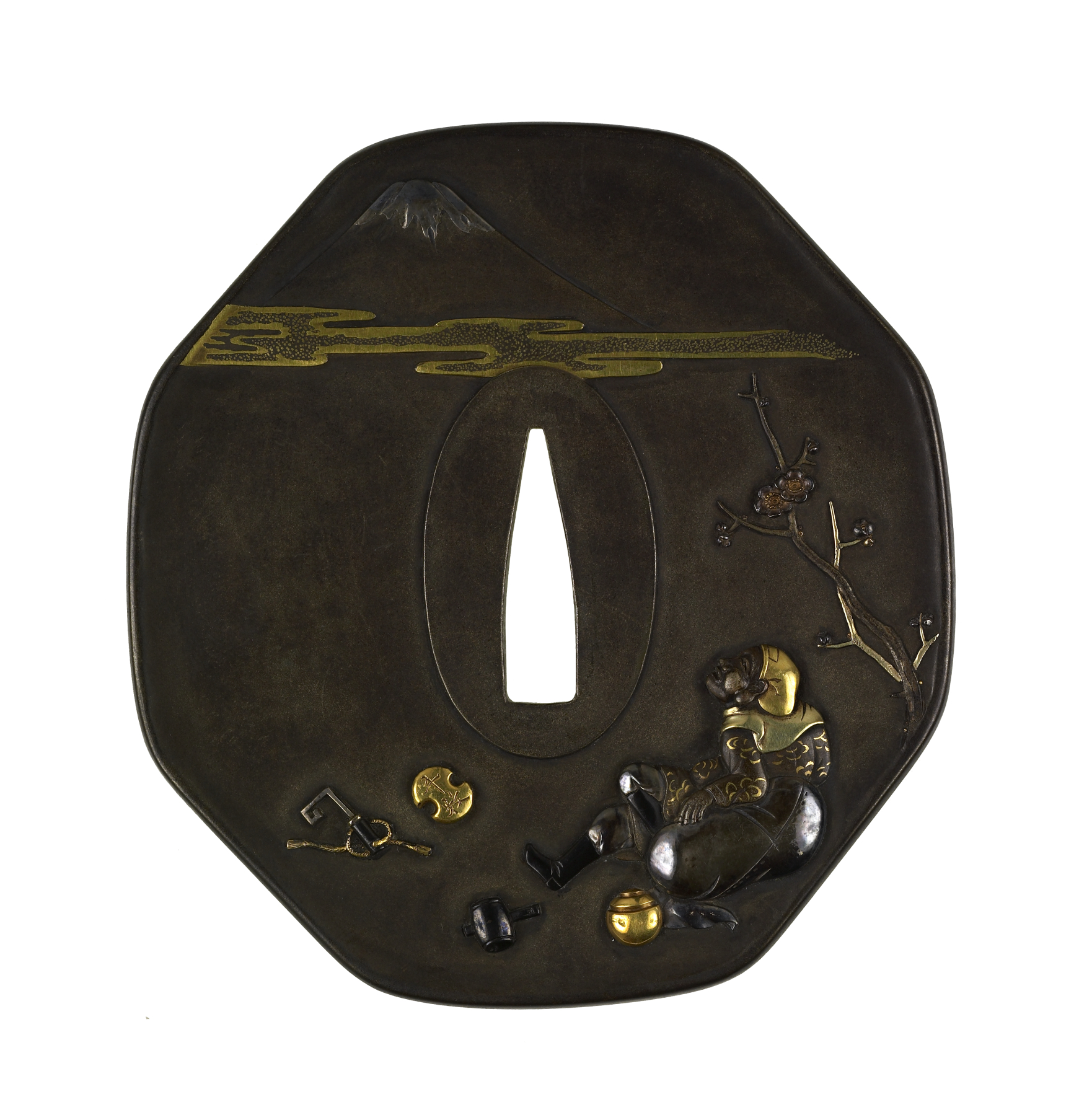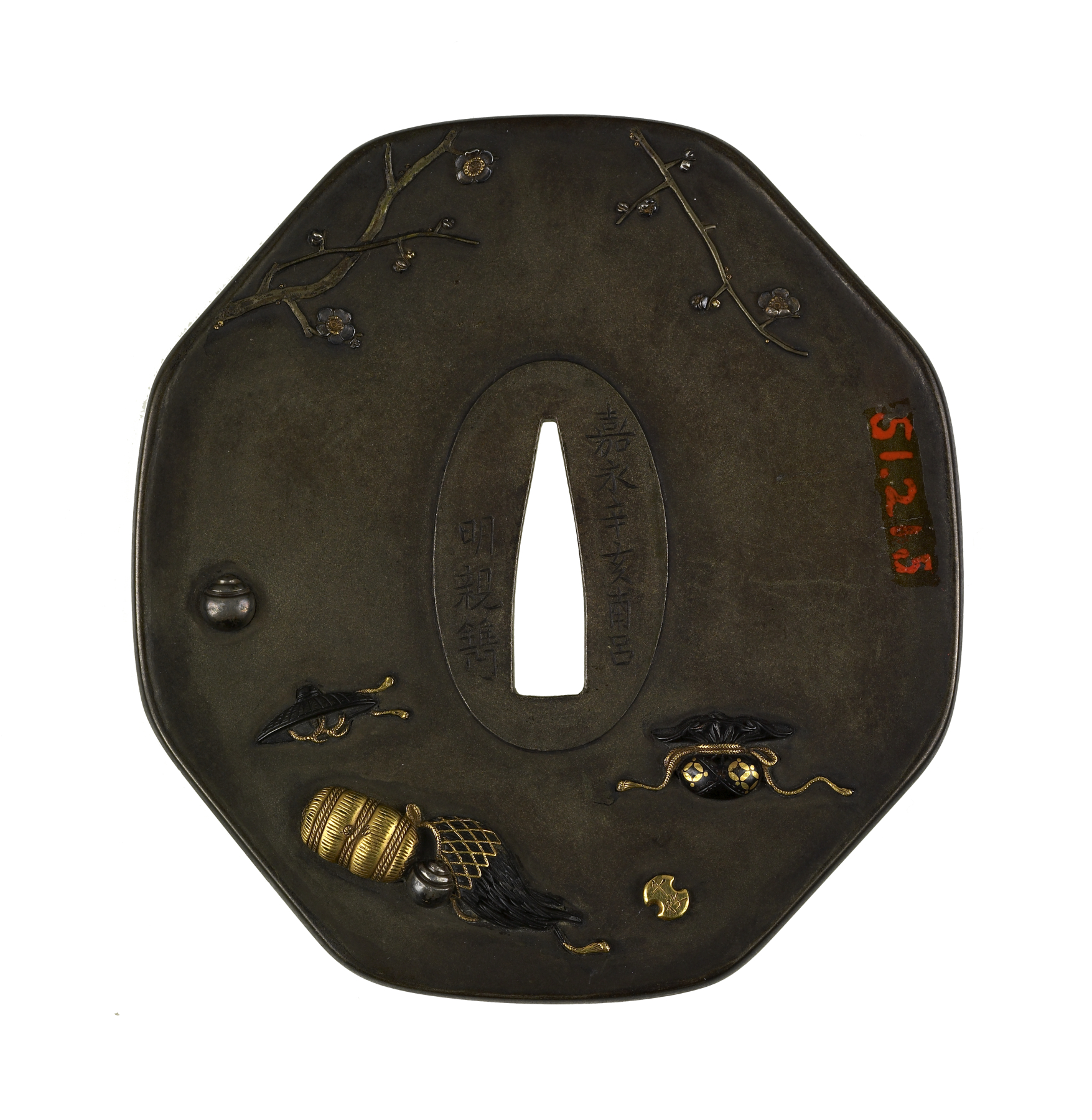Tsuba with the Treasures of the Seven Gods of Good Fortune
(Japanese Military Armor)
This tsuba shows a man gazing up at Mount Fuji surrounded by some of the attributes of the Seven Gods of Good Fortune. These are the contents of the treasure bag carried by Hotei, one of the gods. The man rests against Hotei's bag, Next to the bag is a sacred jewel. At the bottom of the tsuba is Daitoku's hammer. Just above the hammer is a sacred key. The disk on the left with notches on two sides is a coin. Mount Fuji can be seen in the upper left. On the reverse, branches of cherry blossoms frame the upper portion of the tsuba. Along the bottom from right to left are an inexhaustible bag of money, another coin, a feather cape, a bale of rice, a hat the makes the wearer invisible, and another treasure jewel.
Inscription
Provenance
Provenance (from the French provenir, 'to come from/forth') is the chronology of the ownership, custody, or location of a historical object. Learn more about provenance at the Walters.
Henry Walters, Baltimore [date and mode of acquisition unknown]; Walters Art Museum, 1931, by bequest.
Geographies
Japan, Tokyo (Edo) (Place of Origin)
Measurements
3 9/16 x 3 5/16 x 3/16 in. (9 x 8.4 x 0.45 cm)
Credit Line
Acquired by Henry Walters
Location in Museum
Not on view
Accession Number
In libraries, galleries, museums, and archives, an accession number is a unique identifier assigned to each object in the collection.
In libraries, galleries, museums, and archives, an accession number is a unique identifier assigned to each object in the collection.
51.215






